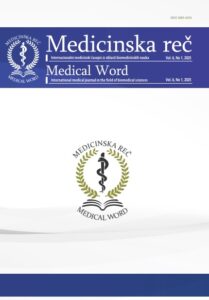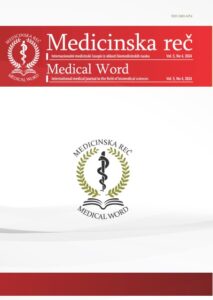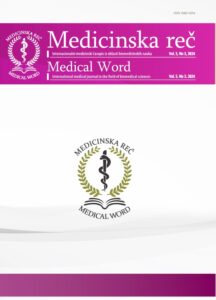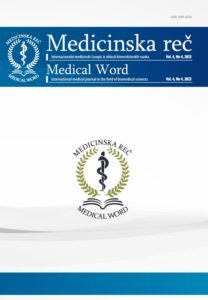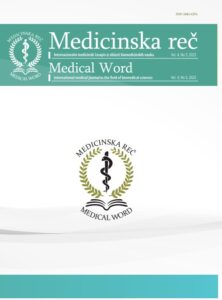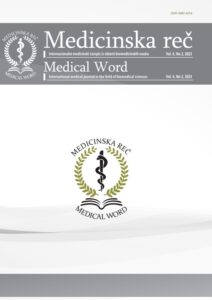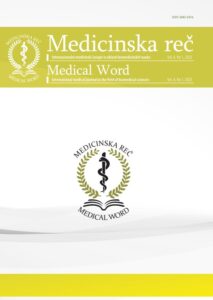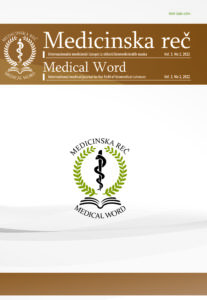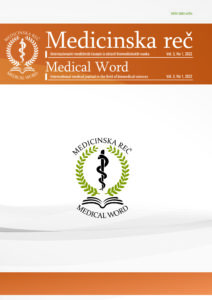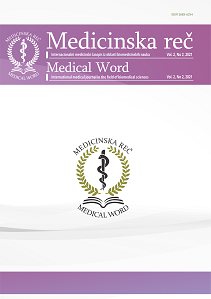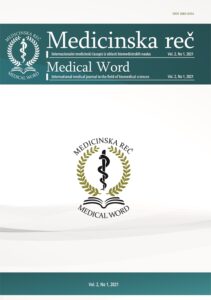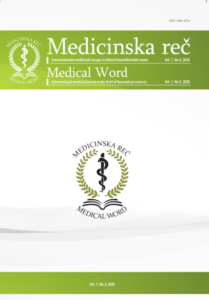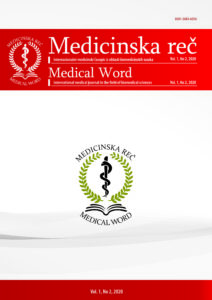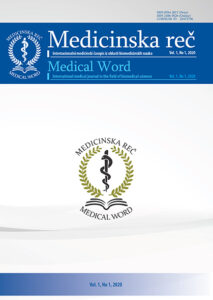Pragmatizam i prestanak pušenja: uloga smanjenja štete u stvaranju zdravijeg društva bez dima
Medicinska reč 2021; 2(2): 76–80
Aktuelna tema
Krzysztof Filipiak, Nadjib Bouayed
Apstrakt
Uprkos velikom broju dokaza koji ukazuju na rizike koje pušenje nosi, mnogi ljudi i dalje nastavljaju da puše. Medicina još nije pronašla „rešenje“ za ovo. Umesto toga, zdravstveni profesionalci (zdravstveni radnici) imaju pristup nizu strategija, uključujući farmakološke i psihološke intervencije, kako bi se podržao prestanak pušenja. Ipak, prestanak pušenja nije lak i ne uspevaju svi. Razlozi zašto je to tako su koliko različiti toliko su i složeni, od fizičke i emocionalne zavisnosti do ritualne navike. Barijere uključuju nedostatak odgovarajuće podrške službi za odvikavanje od pušenja ili zdravstvenih radnika, apstinencijalne simptome i psihosocijalne faktore poput izazova prilagođavanja promeni ponašanja.
Za one ljude koji nisu u mogućnosti ili ne žele da prestanu sa pušenjem, strategije za smanjenje štetnosti mogu pomoći smanjenju rizika povezanih sa pušenjem, od kardiovaskularnih bolesti do raka. Iako je baza dokaza još uvek relativno nezrela, neke studije su pokazale da proizvodi poput e-cigareta i sistema za zagrevanje duvana mogu da isporuče, nikotin koji je adiktivna suspstanca ali isporučuju i manje štetnih materija i kancerogena od cigareta.
U ovom intervjuu, Krzisztof Filipiak, bivši predsednik Poljskog društva za hipertenziju (eng. Polish Society of Hypertension, PTNT) i bivši zamenik rektora Magnificus i dekan za nauku na Medicinskom univerzitetu u Varšavi, Poljska, i Nadjib Bouayed, predsednik Alžirske asocijacije vaskularnih hirurga Univerzitetske bolnice Oran, Alžir, dele svoje mišljenje o pragmatičnom pristupu. Oni objašnjavaju kako je pronalaženje najbolje intervencije za svakog pacijenta od velike važnosti i zašto strategije za smanjenje štetnosti imaju mesto u uslugama koje pružaju savetovališta za prestanak pušenja.
Oni su takođe pregledali trenutno dostupnu literaturu o proizvodima kao što su sistemi koji rade na principu zagrevanja umesto sagorevanja duvana (eng. Heat-not-burn, HnB) i identifikovali praznine u bazi dokaza.
Ključne reči: prestanak pušenja, zavisnost, smanjenje štetnosti, bezdimni duvanski proizvodi
Literatura
- World Health Organization. Tobacco. 2021. Available at: https://www.who.int/news-room/fact-sheets/detail/tobacco. Last accessed: 12 August 2021.
- Royal College of Physicians Tobacco Advisory Group. Nicotine without smoke: tobacco harm reduction. 2016. Available at: https://www.rcplondon.ac.uk/projects/outputs/nicotine-without-smoke-tobacco-harm-reduction. Last accessed: 16 August 2021.
- Centers for Disease Control and Prevention (CDC). How Tobacco Smoke Causes Disease: The Biology and Behavioral Basis for Smoking-Attributable Disease: A Report of the Surgeon General. 2020. Available at: https://www.ncbi.nlm.nih.gov/books/NBK53021/. Last accessed: 4 May 2021.
- Centers for Disease Control and Prevention (CDC). Smoking & tobacco use. 2020. Available at: https://www.cdc.gov/tobacco/basic_information/health_effects/index.htm#:~:text=Smoking%20causes%20cancer%2C%20heart%20disease,immune%20system%2C%20including%20rheumatoid%20arthritis. Last accessed: 4 May 2021.
- Centers for Disease Control and Prevention (CDC). Lung cancer: what are the risk factors for lung cancer? 2020. Available at: https://www.cdc.gov/cancer/lung/basic_info/risk_factors.htm#:~:text=Cigarette%20smoking%20can%20cause%20cancer,and%20causes%20acute%20myeloid%20leukemia. Last accessed: 4 May 2021.
- Rezaei S, Akbari Sari A, Arab M, Majdzadeh R, Mohammad Poorasl A. Economic burden of smoking: a systematic review of direct and indirect costs. Med J Islam Repub Iran 2016; 30: 397.
- NHS England. Statistics on smoking, England – 2019. 2019. Available at: https://digital.nhs.uk/data-and-information/publications/statistical/statistics-on-smoking/statistics-on-smoking-england-2019. Last accessed: 4 May 2021.
- McLaughlin I, Dani JA, De Biasi M. Nicotine withdrawal. Curr Top Behav Neurosci 2015; 24: 99-123.
- Piepoli MF, Hoes AW, et al; ESC Scientific Document Group. 2016 European Guidelines on cardiovascular disease prevention in clinical practice: The Sixth Joint Task Force of the European Society of Cardiology and Other Societies on Cardiovascular Disease Prevention in Clinical Practice (constituted by representatives of 10 societies and by invited experts) Developed with the special contribution of the European Association for Cardiovascular Prevention & Rehabilitation (EACPR). Eur Heart J 2016; 37(29): 2315-81.
- British Thoracic Society (BTS). British Thoracic Society recommendations for hospital smoking cessation services for commissioners and health care professionals. 2012. Available at: https://www.brit-thoracic.org.uk/media/70157/bts-recommendations-for-smoking-cessation-services_.pdf. Last accessed: 12 August 2021.
- Hawk M, Coulter RWS, Egab JE., et al. Harm reduction principles for healthcare settings. Harm Reduct J 2017; 14(1): 70.
- Cox S, Dawkins L. Global and local perspectives on tobacco harm reduction: what are the issues and where do we go from here? Harm Reduct J 2018; 15(1): 32.
- The National Academies of Sciences, Engineering and Medicine. public health consequences of e-cigarettes conclusions by level of evidence. (2018). Available at: https://www.nap.edu/resource/24952/012318ecigaretteConclusionsbyEvidence.pdf. Last accessed 23 August 2021.
- McNeill A, Brose LS, Calder R, Bauld L, Robson D. Evidence review of e-cigarettes and heated tobacco products 2018: a report commissioned by Public Health England. Available at: https://assets.publishing.service.gov.uk/government/uploads/system/uploads/attachment_data/file/684963/Evidence_review_of_e-cigarettes_and_heated_tobacco_products_2018.pdf. Last accessed: 4 May 2021.
- Public Health England (PHE). Vaping in England: 2021 evidence update summary. 2021. Available at: https://www.gov.uk/government/publications/vaping-in-england-evidence-update-february-2021/vaping-in-england-2021-evidence-update-summary. Last accessed: 4 May 2021.
- Bullen C, Howe C, Laugesen M., et al. Electronic cigarettes for smoking cessation: a randomised controlled trial. Lancet 2013; 382(9905): 1629-37.
- Henningfield JE. Nicotine medications for smoking cessation. N Engl J Med 1995; 333(18): 1196-203.
- Etter JF, Bullen C. A longitudinal study of electronic cigarette users. Addict Behav 2014; 39(2): 491-4.
- Mallock N, Böss L, Burk R, et al. Levels of selected analytes in the emissions of “heat not burn” tobacco products that are relevant to assess human health risks. Arch Toxicol 2018; 92(6): 2145-9.
- Biondi-Zoccai G, Sciarretta S, Bullen C, et al. Acute effects of heat-not-burn, electronic vaping, and traditional tobacco combustion cigarettes: the Sapienza University of Rome-Vascular Assessment of Proatherosclerotic Effects of Smoking (SUR-VAPES) 2 randomized trial. J Am Heart Assoc 2019; 8(6): e010455.
- Lüdicke F, Ansari SM, Lama N, et al. Effects of switching to a heat-not-Burn tobacco product on biologically relevant biomarkers to assess a candidate modified risk tobacco product: a randomized trial. Cancer Epidemiol Biomarkers Prev 2019; 28(11): 1934-43.


